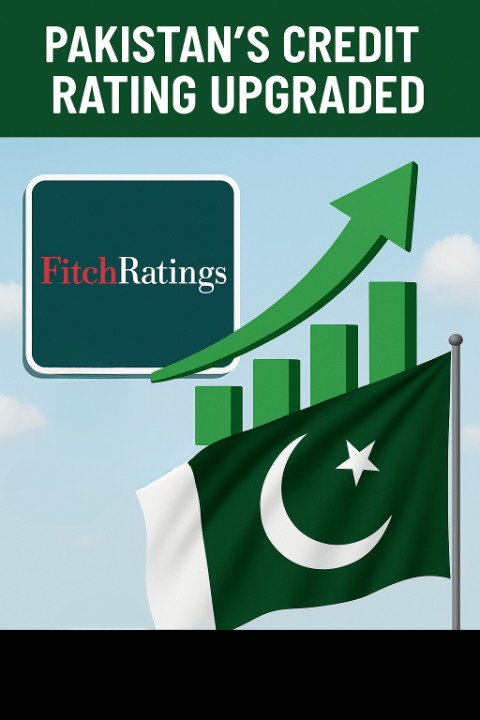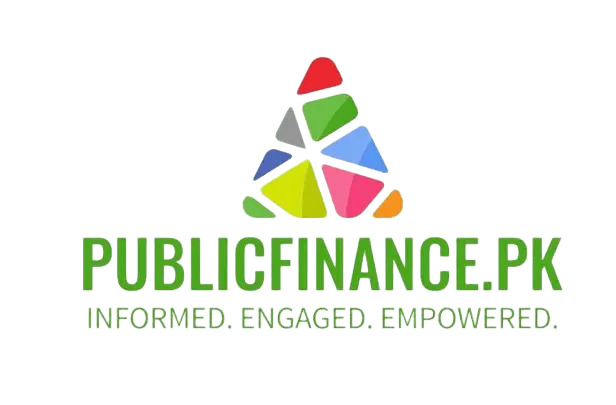
In a significant boost to Pakistan’s economic standing, Fitch Ratings has upgraded the country’s long-term foreign currency issuer default rating from ‘CCC+’ to ‘B-’, citing sustained progress in macroeconomic reforms, improved external buffers, and adherence to fiscal consolidation measures under the ongoing International Monetary Fund (IMF) programme. This development reflects a broader sentiment of cautious optimism surrounding Pakistan’s economic recovery and public financial management efforts.
Pakistan’s sovereign credit profile has undergone multiple downgrades in recent years, primarily due to growing external imbalances, depleting foreign exchange reserves, fiscal slippages, and delayed structural reforms. In 2022 and early 2023, all three major rating agencies — Fitch, Moody’s, and S&P Global — downgraded Pakistan’s rating to near or at default levels, amid heightened concerns over debt repayment capacity and political instability.
Fitch, in particular, had lowered Pakistan’s rating to ‘CCC’ in February 2023, which is just a notch above default. This action was triggered by dwindling reserves (then below $3 billion), rising external debt obligations, and a deteriorating current account. The situation was exacerbated by the global commodity crisis and domestic political turbulence, resulting in delayed disbursements under the IMF programme and reluctance from bilateral creditors.
The recent revision to ‘B-’ is anchored in a number of encouraging macroeconomic developments. First, Pakistan successfully concluded the $3 billion Stand-By Arrangement (SBA) programme with the IMF in March 2025, demonstrating its commitment to structural reforms, particularly in fiscal discipline, energy sector rationalization, and monetary tightening.
Second, foreign exchange reserves have stabilised above $8 billion, supported by improved remittance inflows, controlled imports, and renewed multilateral and bilateral financing. The State Bank’s flexible exchange rate regime and enhanced transparency have also contributed to restoring external confidence.
Third, the government has made visible efforts to expand the tax base, reduce untargeted subsidies, and manage the fiscal deficit. The primary surplus target agreed with the IMF has been largely met, aided by increased tax revenue and expenditure control. This fiscal consolidation is expected to continue under the forthcoming medium-term strategy.
Fourth, the Pakistani Rupee has shown signs of stability, and inflation has come down from record highs of over 30% in 2023 to single digits in early 2025. This has been achieved through tighter monetary policy, improved agricultural output, and moderation in global fuel and food prices.
Fitch’s revision follows a broader trend of cautious credit optimism. Moody’s has recently revised Pakistan’s outlook from ‘negative’ to ‘stable’, though maintaining a low rating in the Caa range. S&P Global has maintained Pakistan at ‘CCC+’, but has acknowledged the positive impact of IMF engagement and the government’s reform efforts. Additionally, international bond spreads have narrowed, and sovereign credit default swaps (CDS) have declined, signalling improved investor sentiment.
This upgrade is more than symbolic. It carries tangible implications for Pakistan’s public finance landscape. With an improved rating, Pakistan can now consider accessing international capital markets on better terms, though market conditions remain challenging. This could include diaspora bonds, green Sukuk, and climate financing instruments.
A higher rating lowers the sovereign risk premium, potentially reducing the cost of future borrowing — especially from commercial creditors and development partners. Confidence from multilateral and bilateral lenders may translate into extended budgetary support, thereby creating room for development spending without breaching fiscal discipline.
The upgrade also acts as a credibility signal to domestic and international investors, potentially boosting private sector confidence, capital inflows, and FDI.
While the upgrade is encouraging, it remains at the lower end of the rating spectrum, indicating continued vulnerability. The outlook, though stable, is conditional on key reforms being sustained. Risks include debt sustainability concerns, with public debt still hovering above 70% of GDP. The energy sector’s circular debt, unless addressed structurally, continues to threaten fiscal consolidation efforts. The trajectory of reforms also depends heavily on political continuity and governance capacity.
Pakistan is expected to enter negotiations for a new, medium-term Extended Fund Facility (EFF) with the IMF, which will be critical to anchor the reform process and maintain credibility. The upgrade by Fitch should be seen as a recognition of effort rather than arrival. It is a timely endorsement of Pakistan’s commitment to fiscal prudence, macroeconomic stability, and structural reform — a momentum that must now be maintained with political will, institutional coherence, and public trust.
This article was published on www.publicfinance.pk
